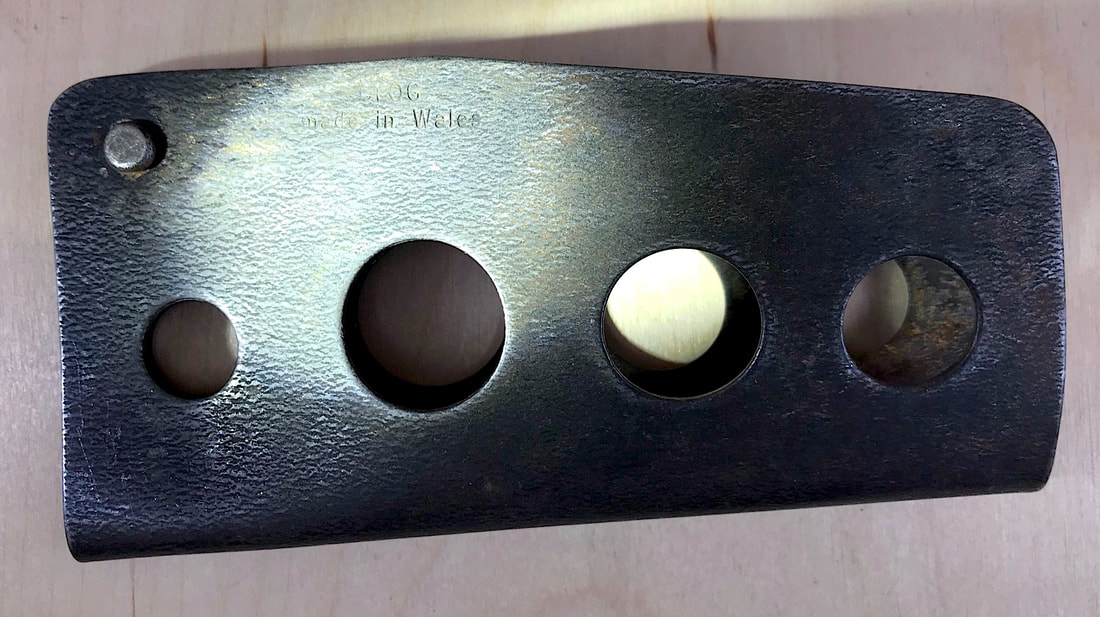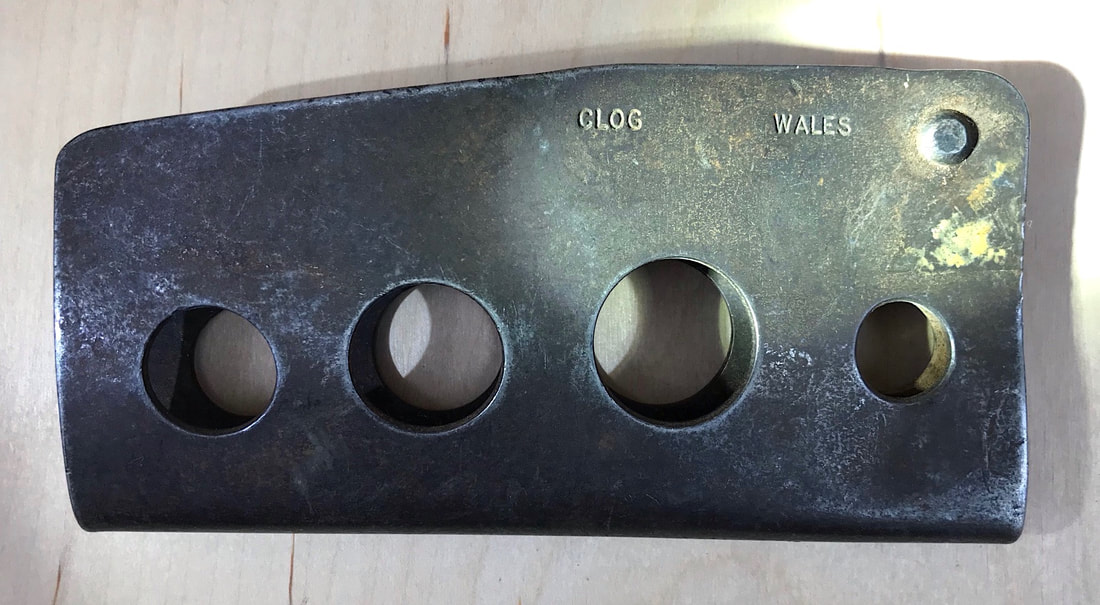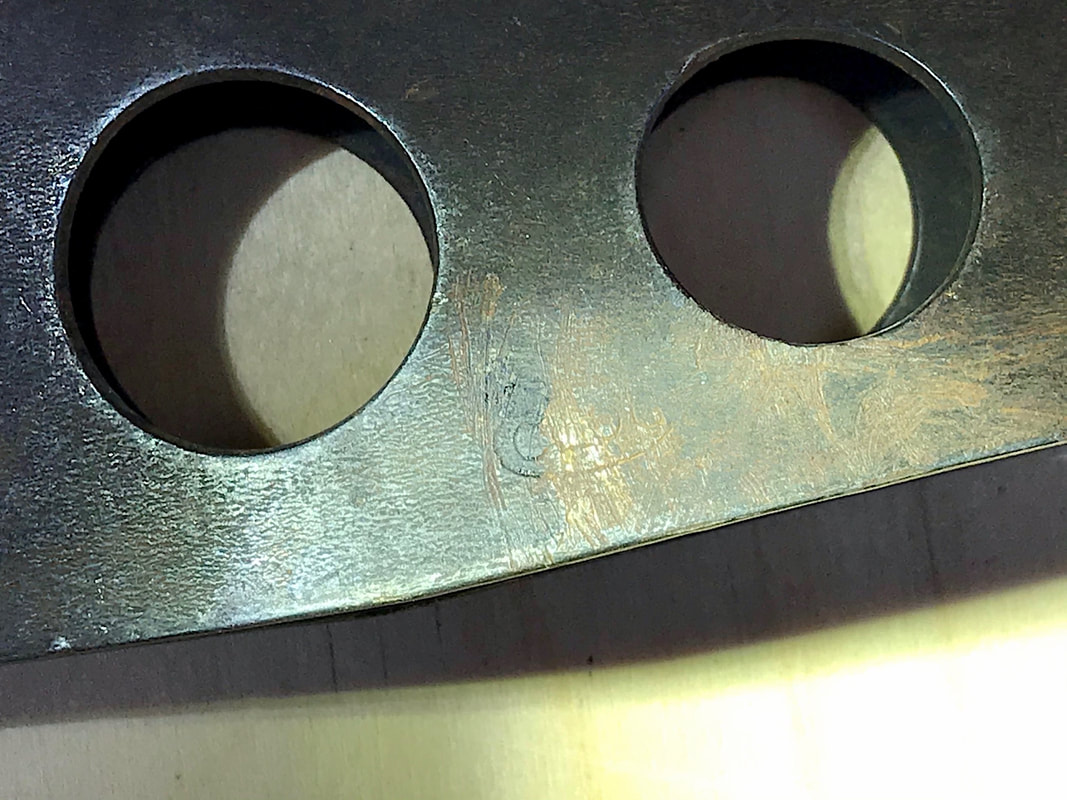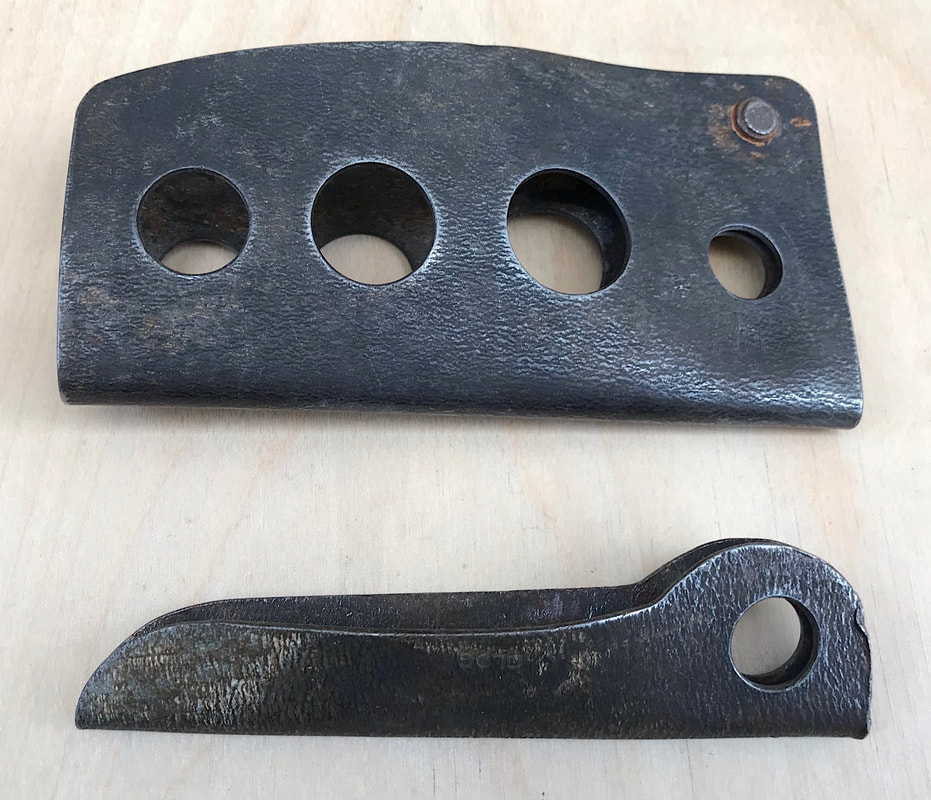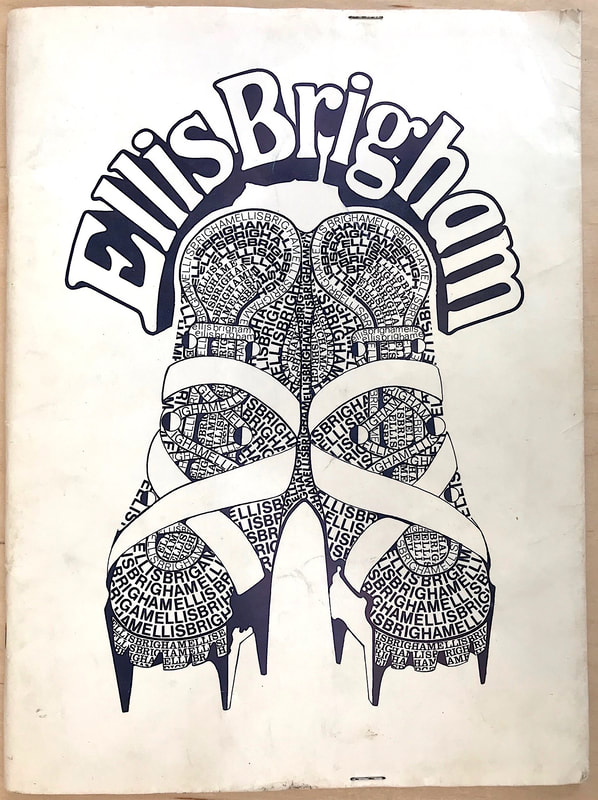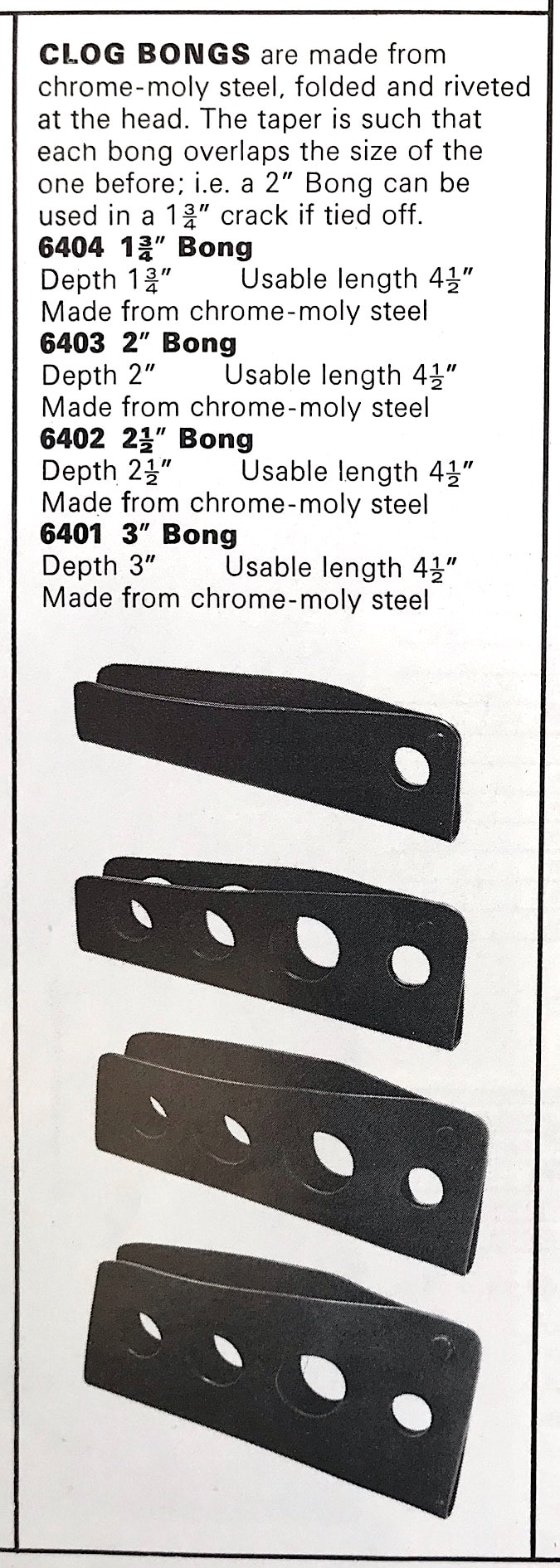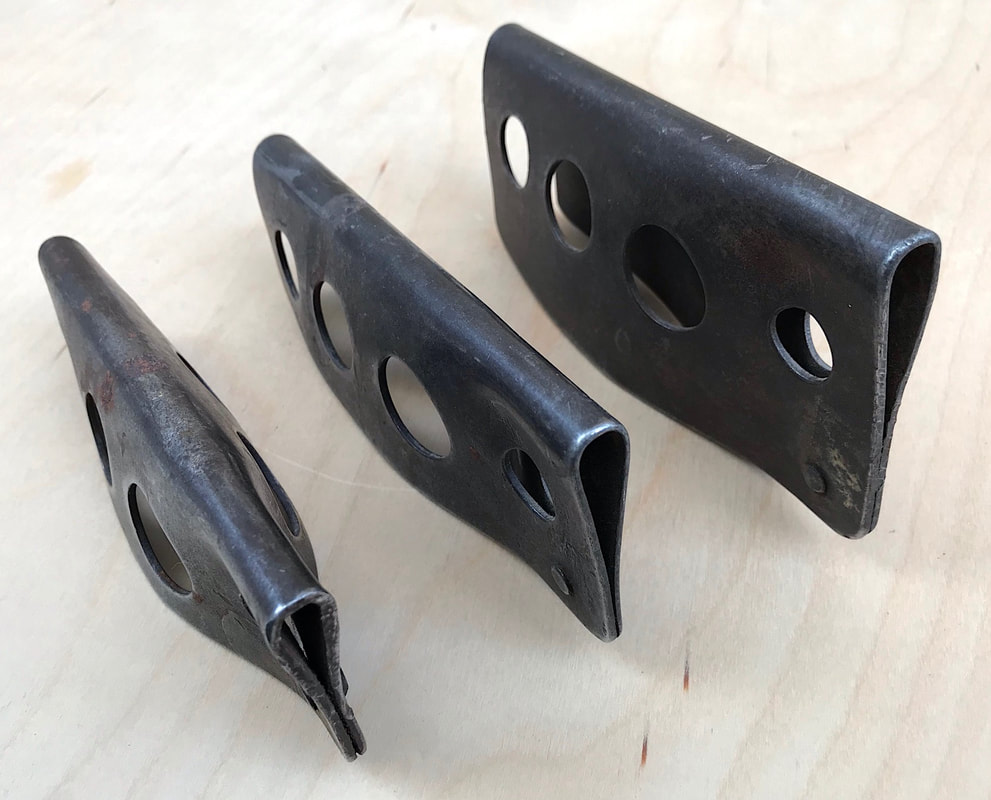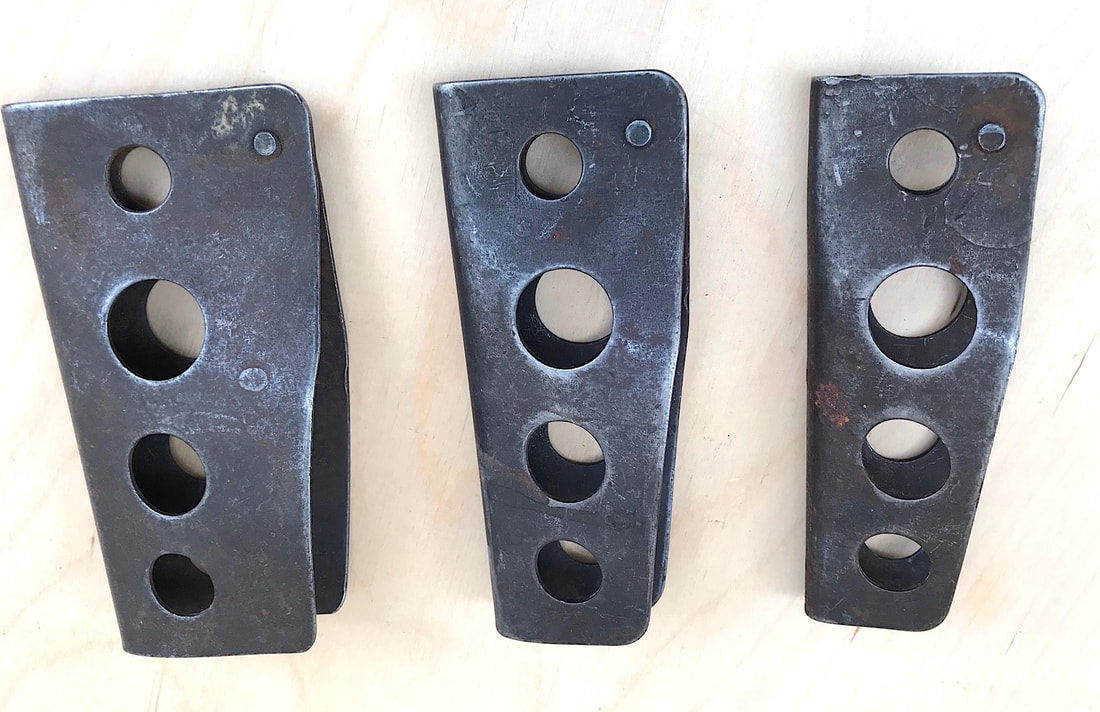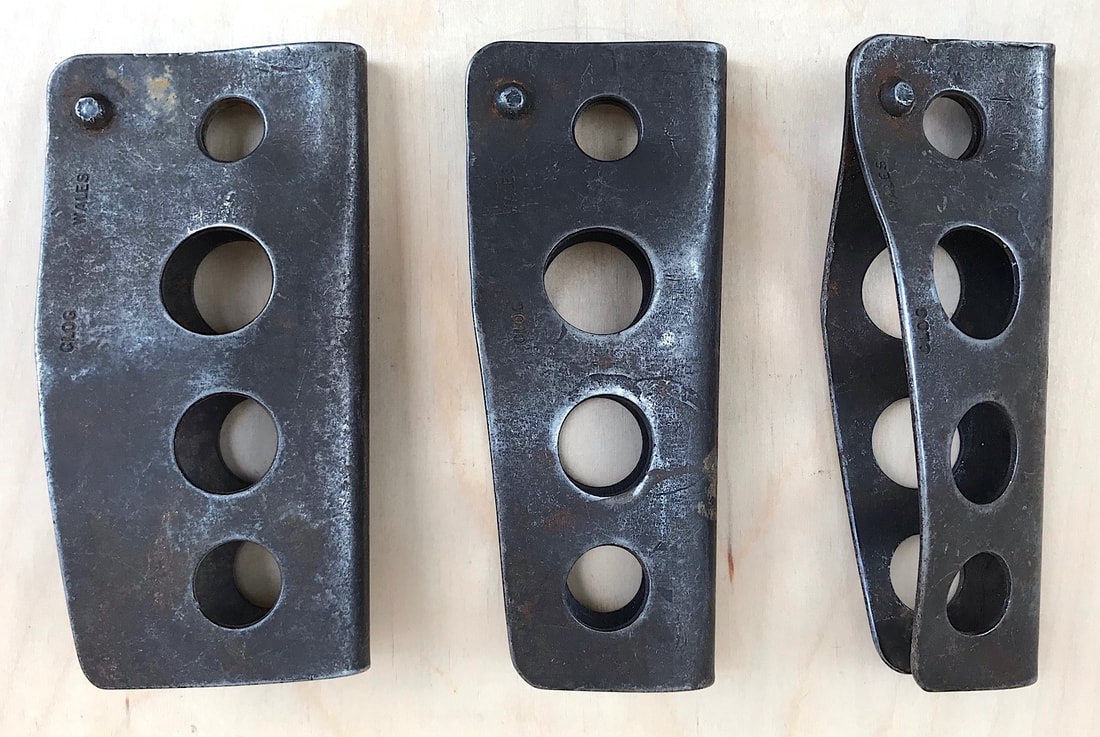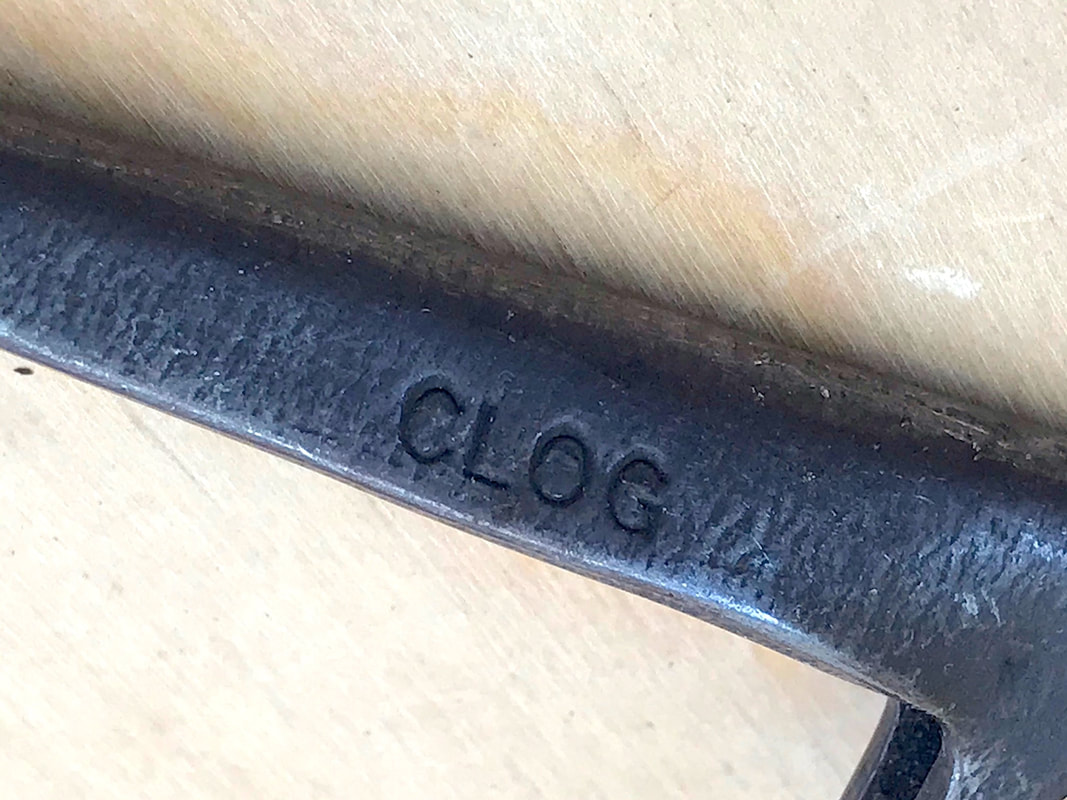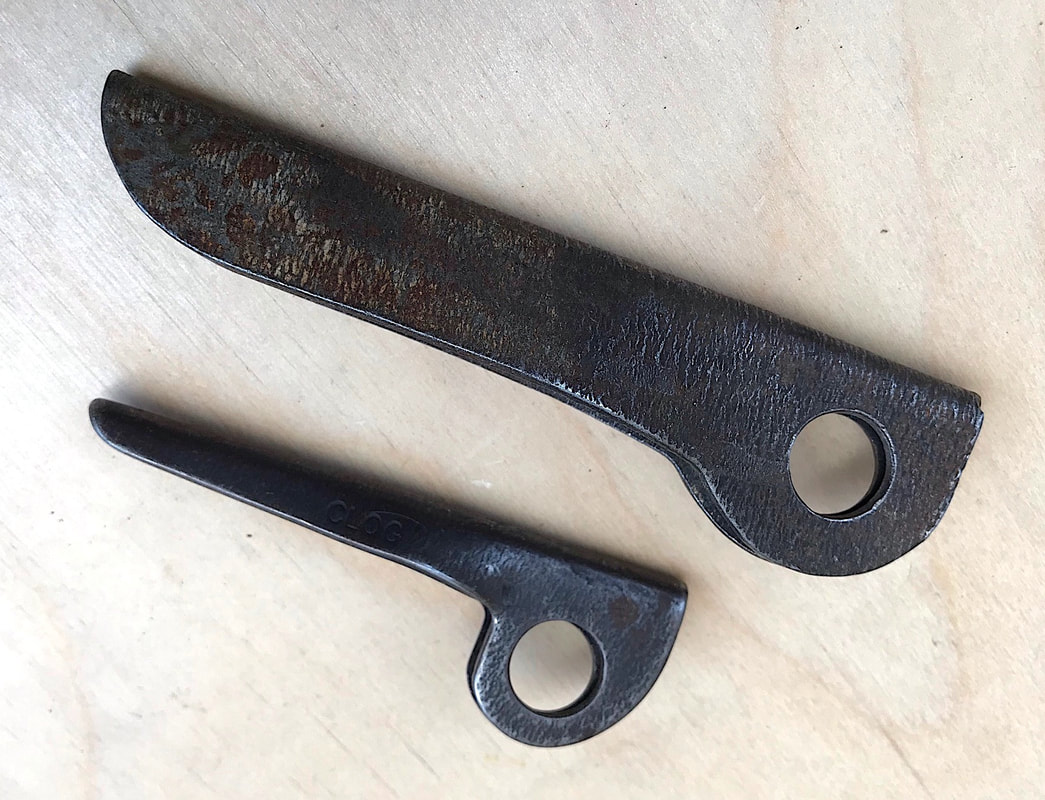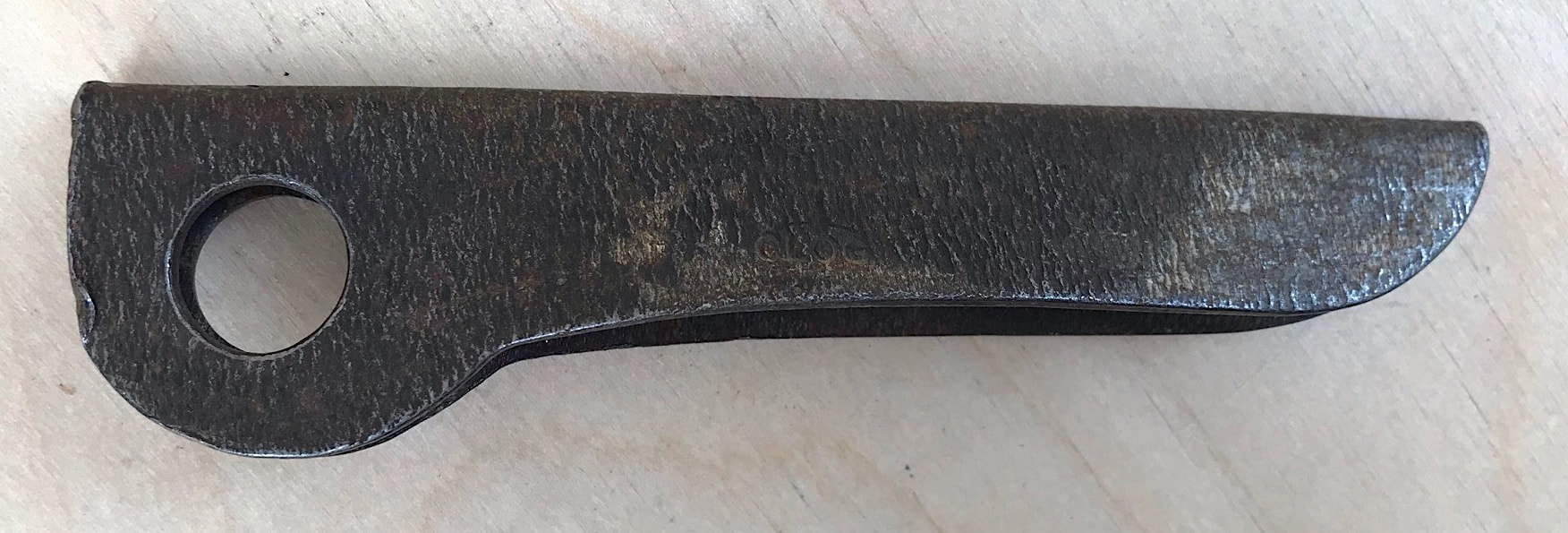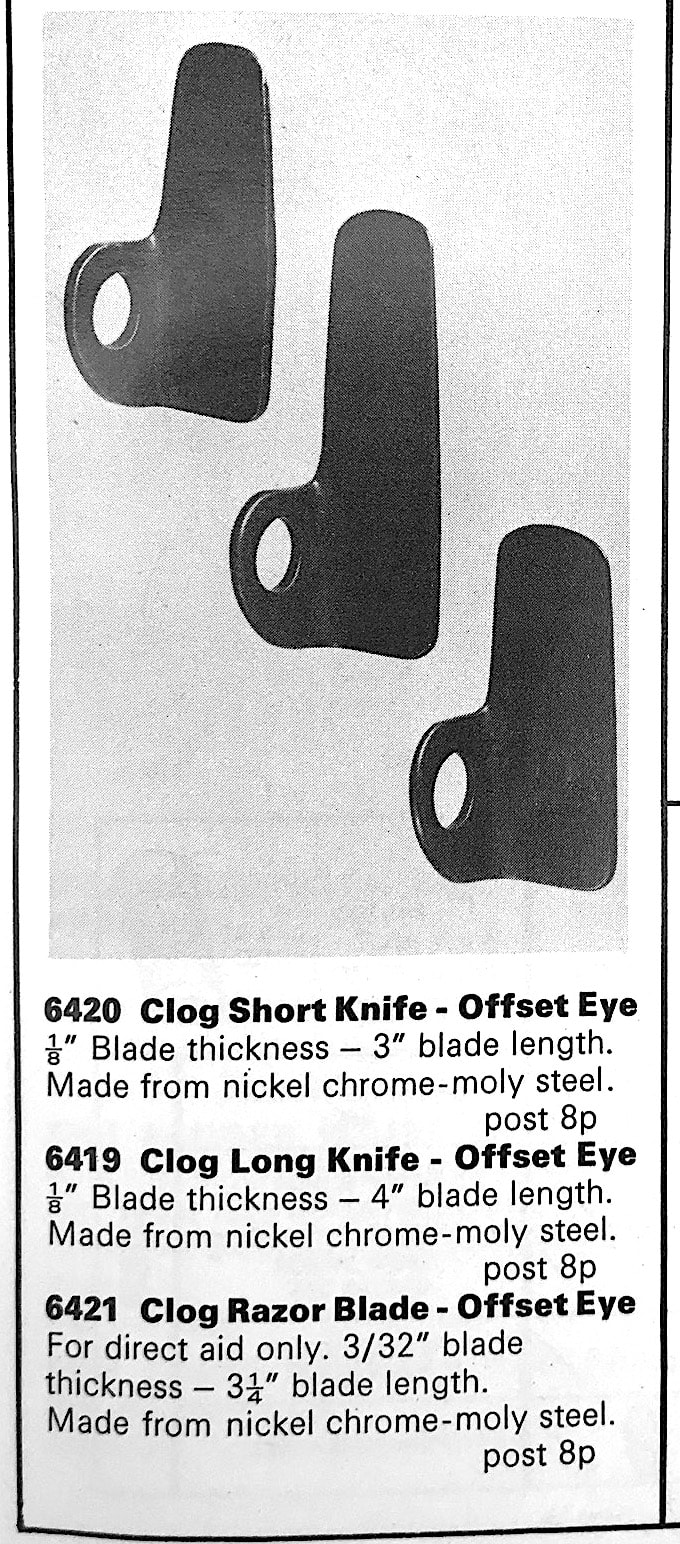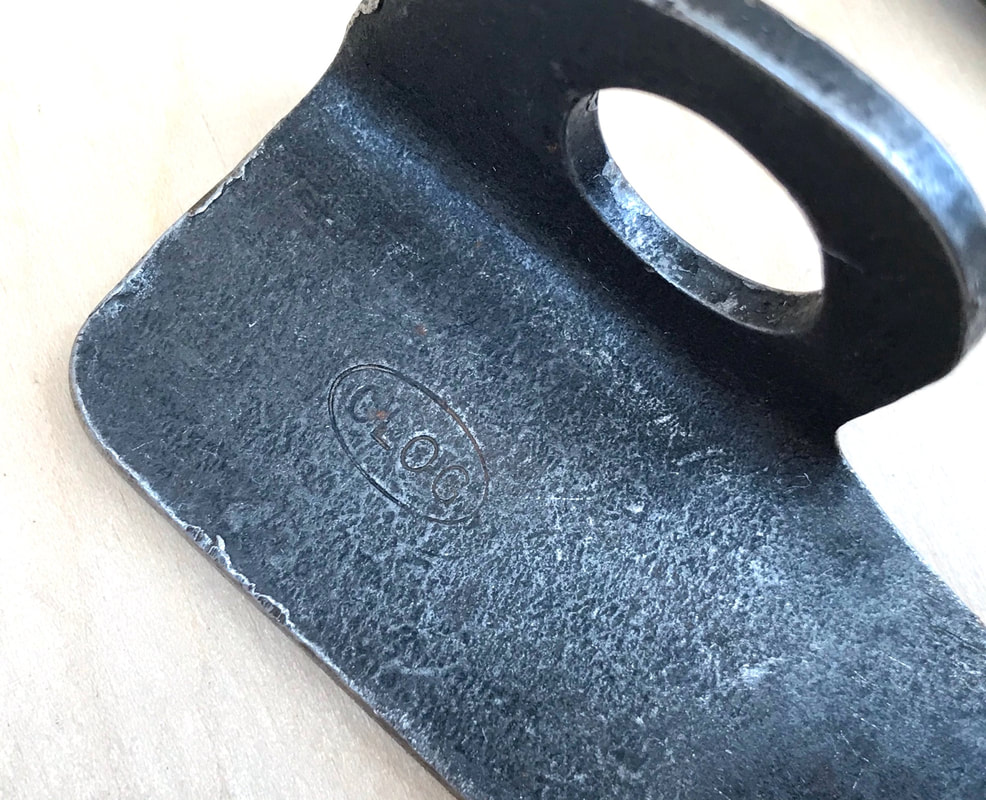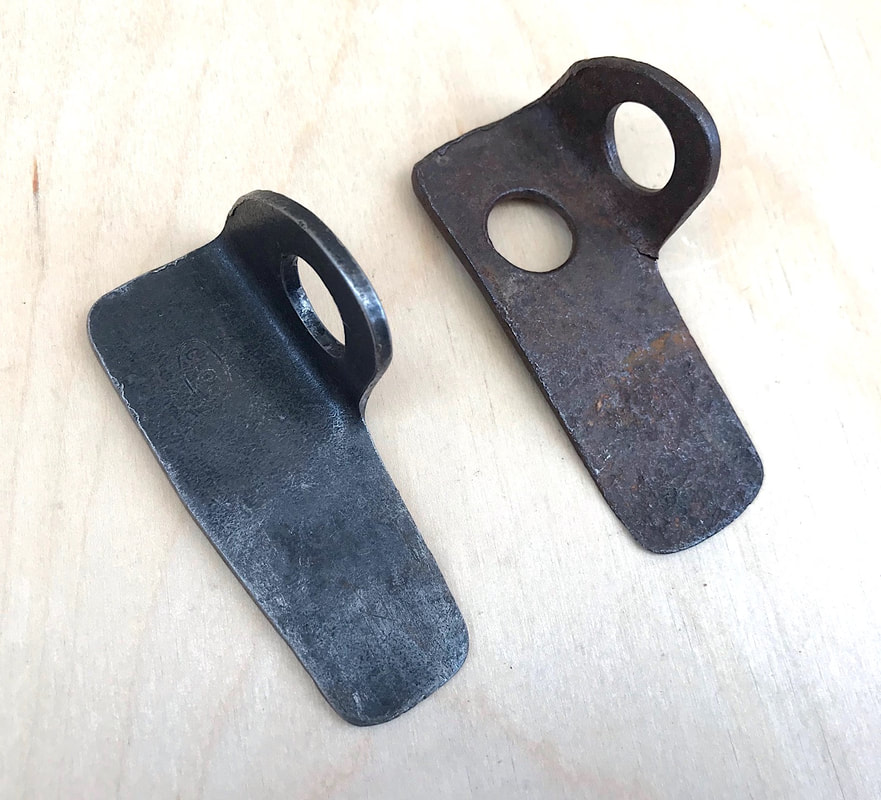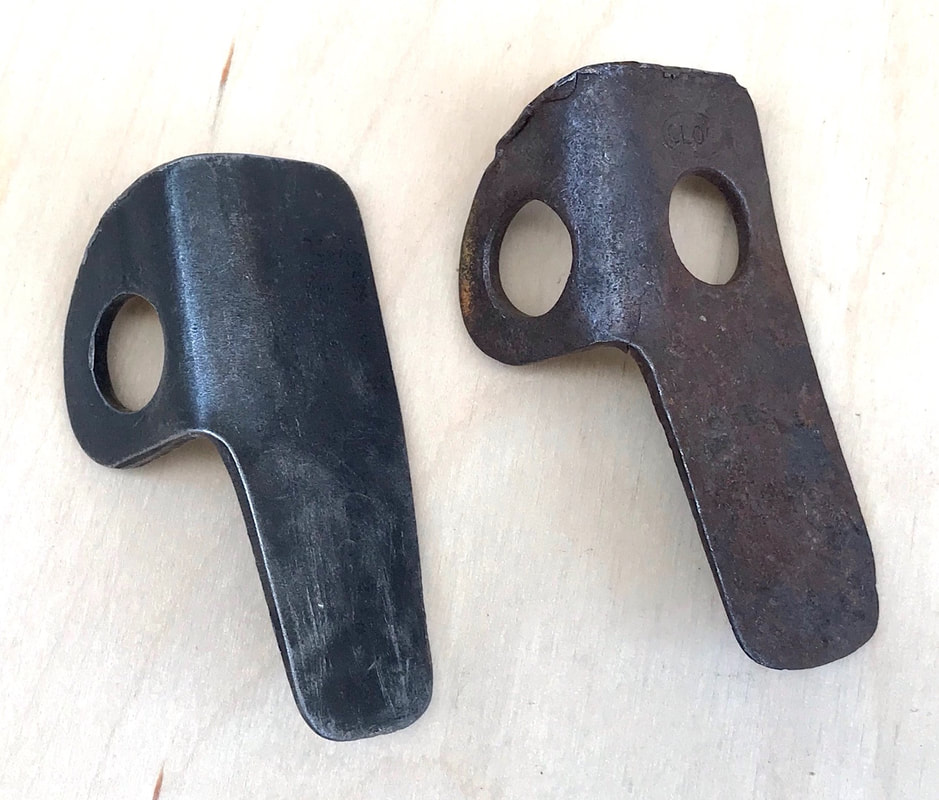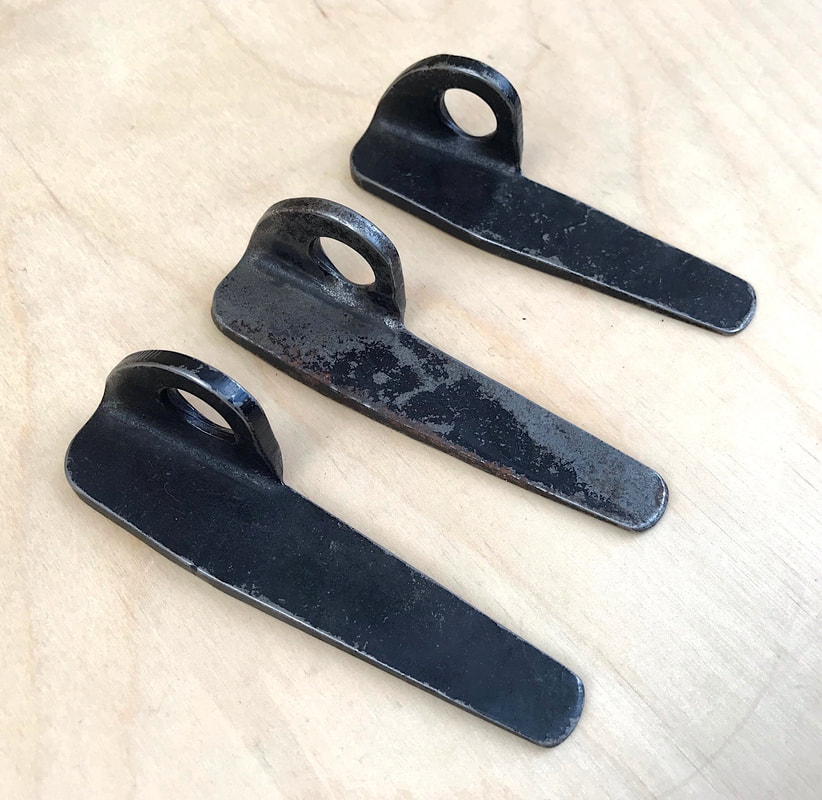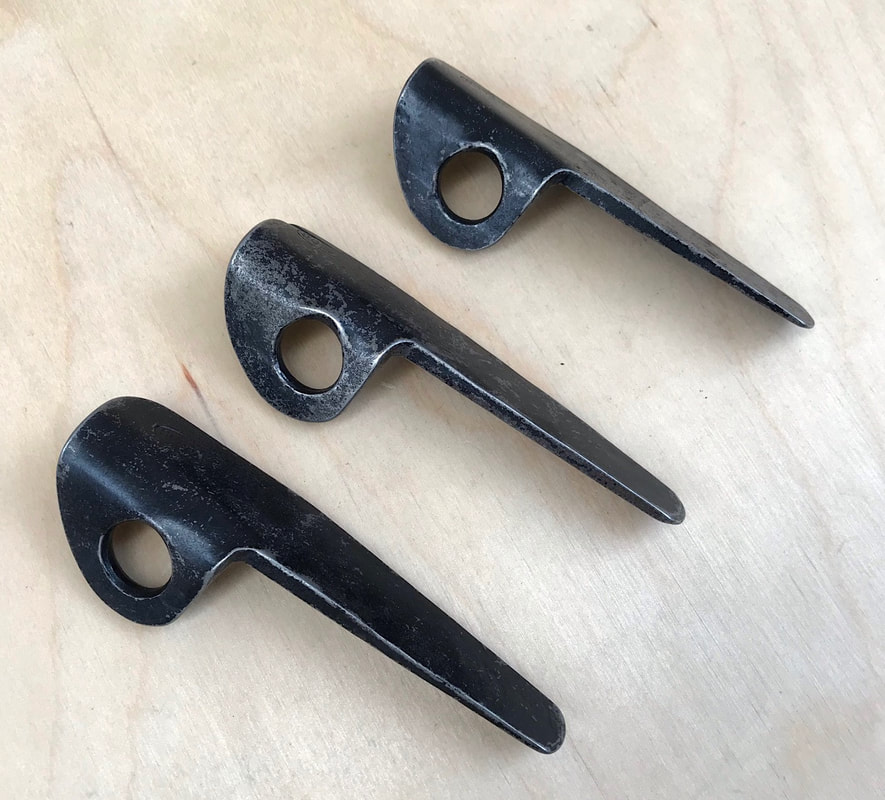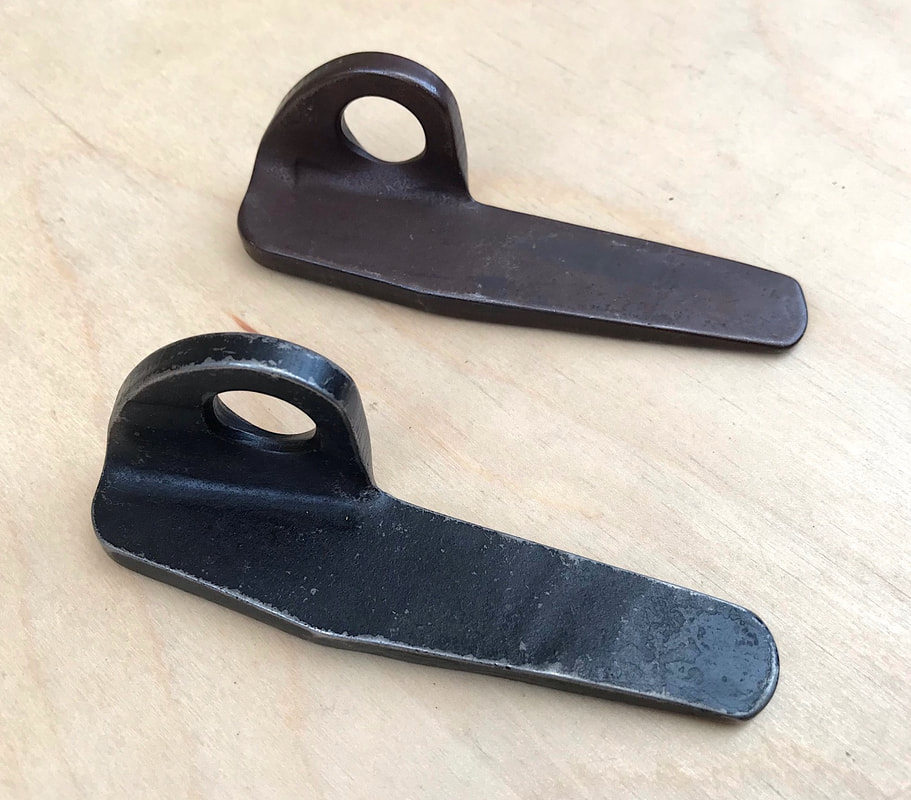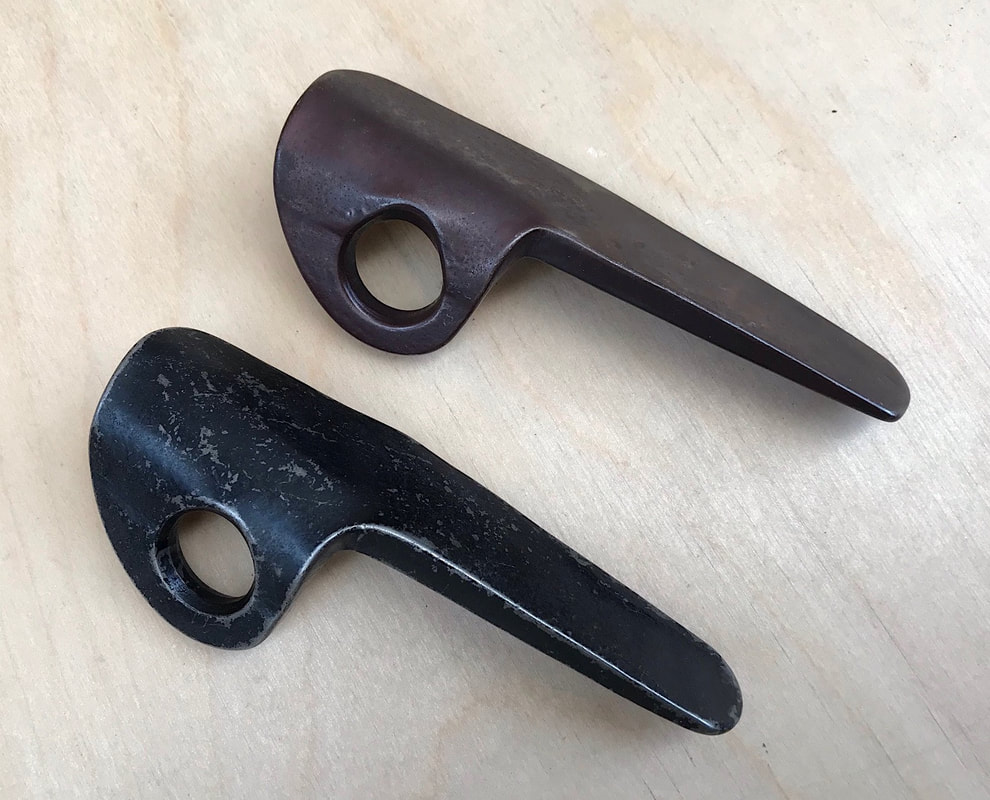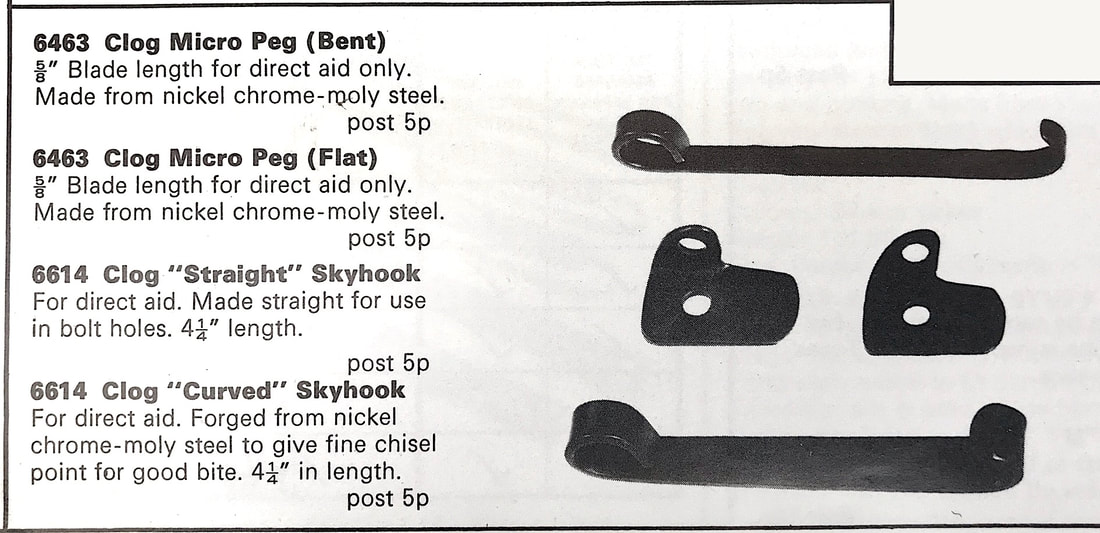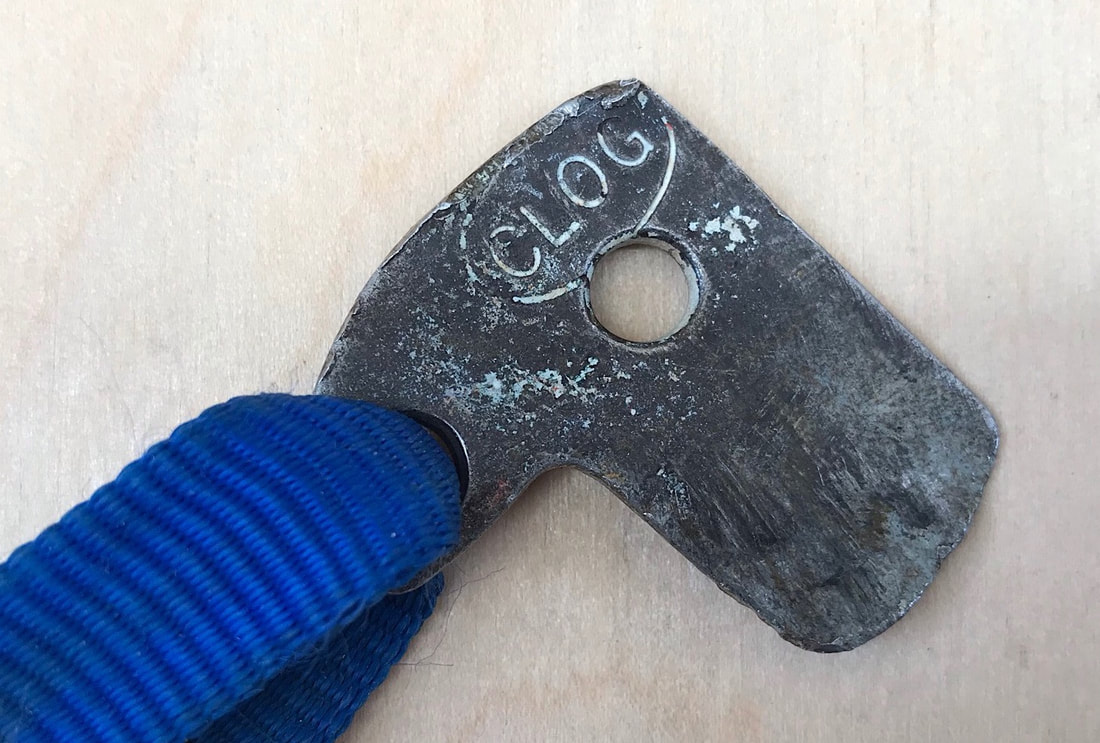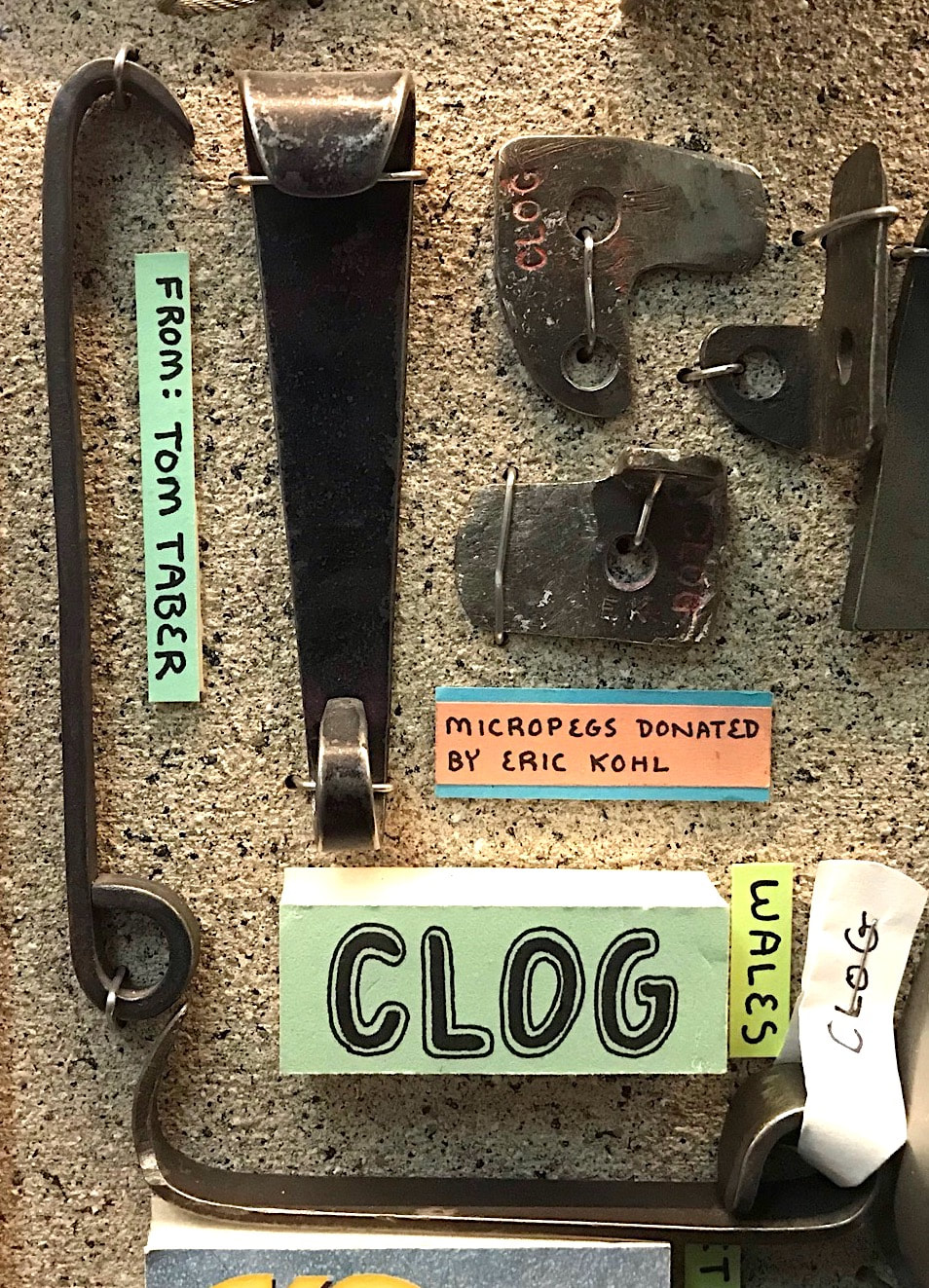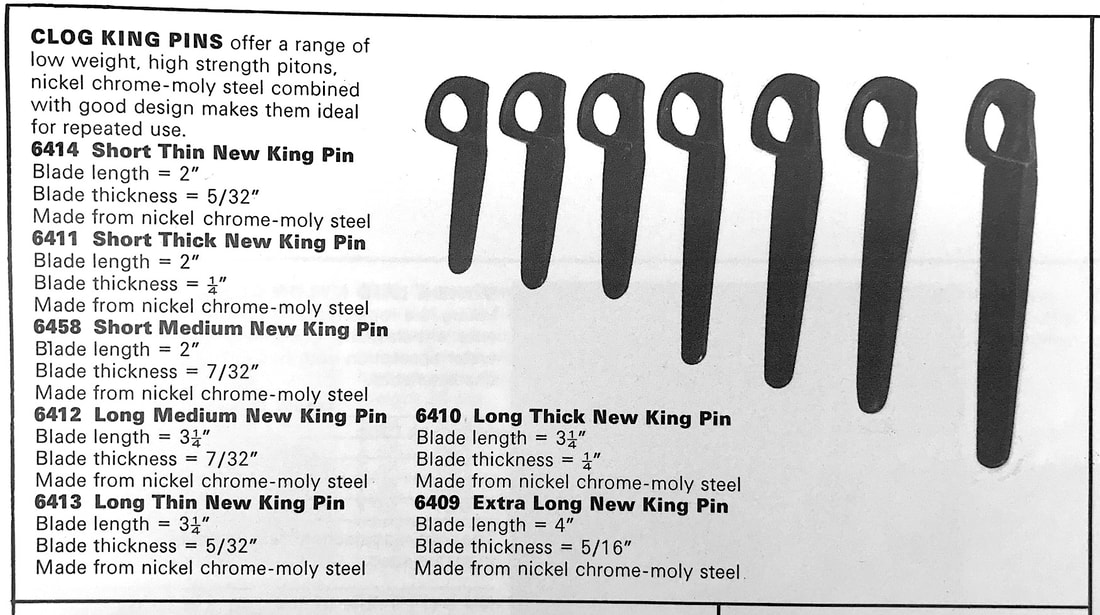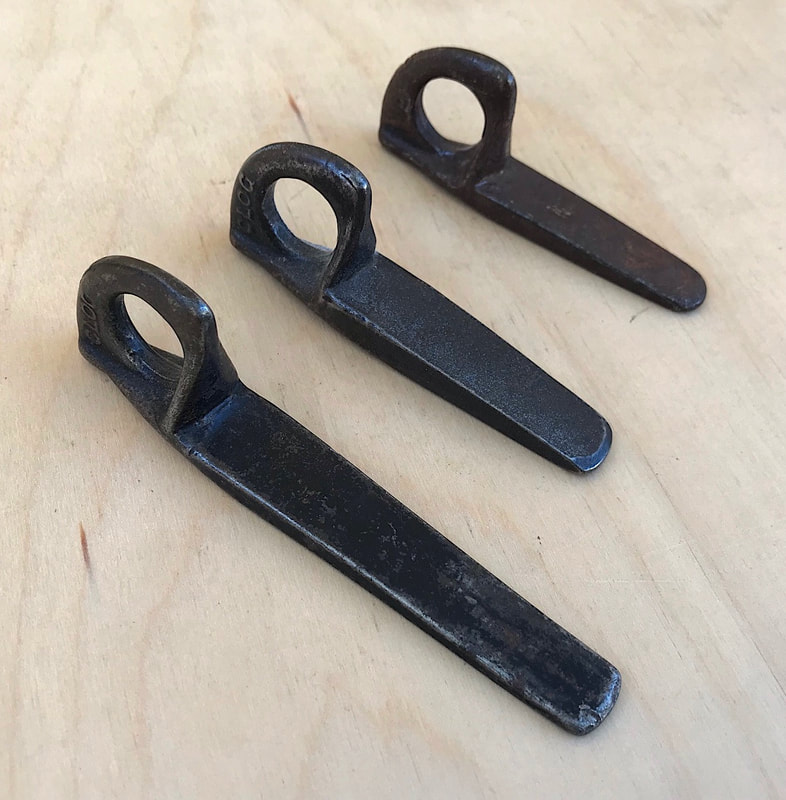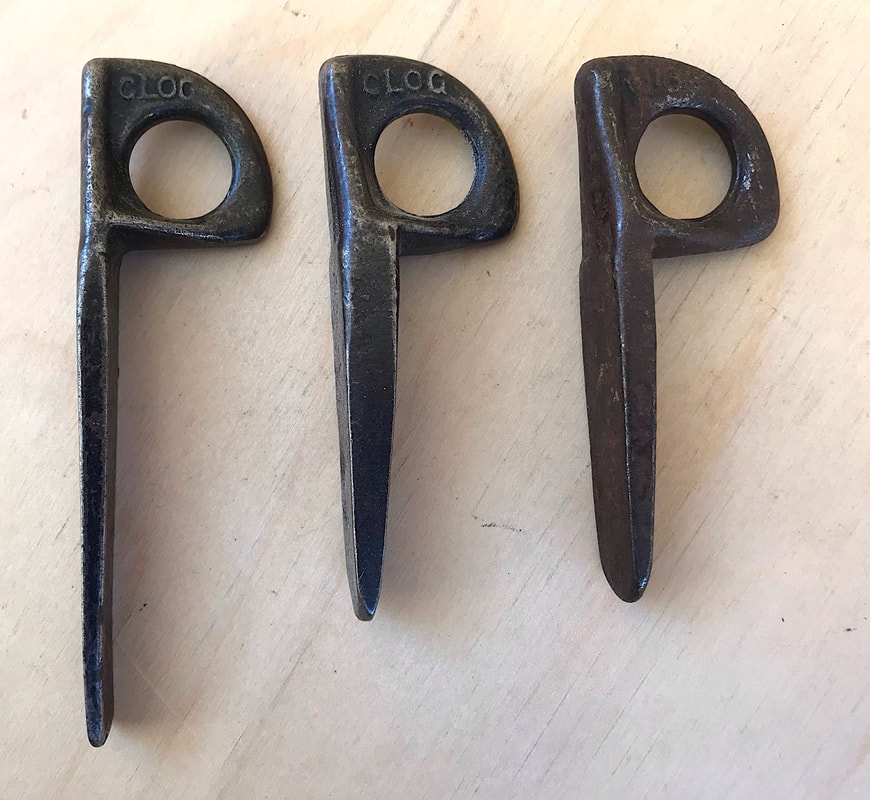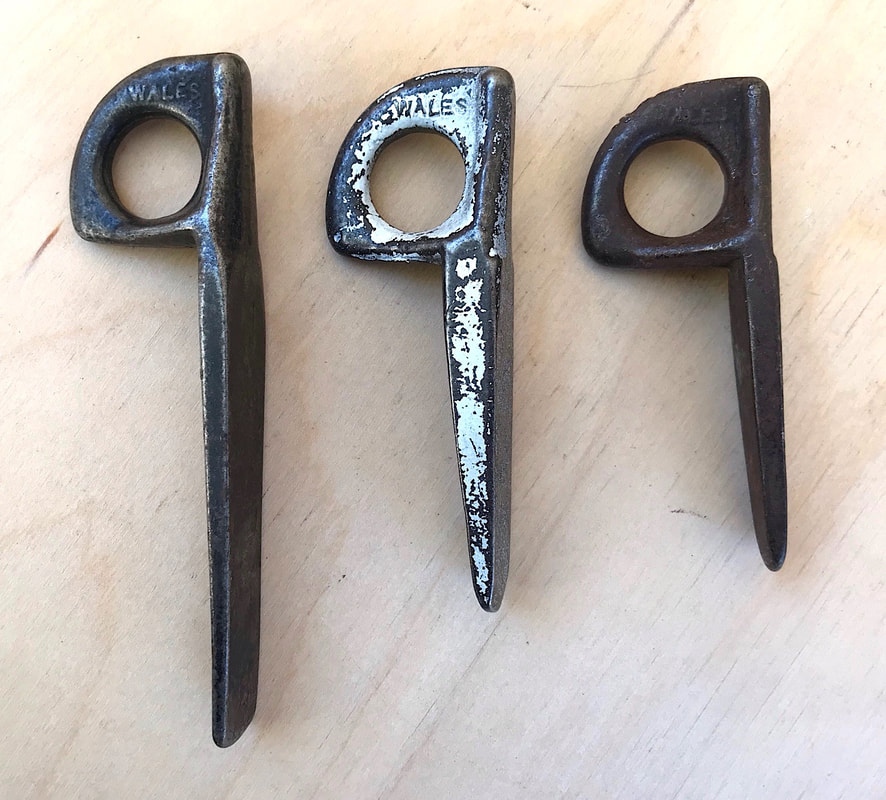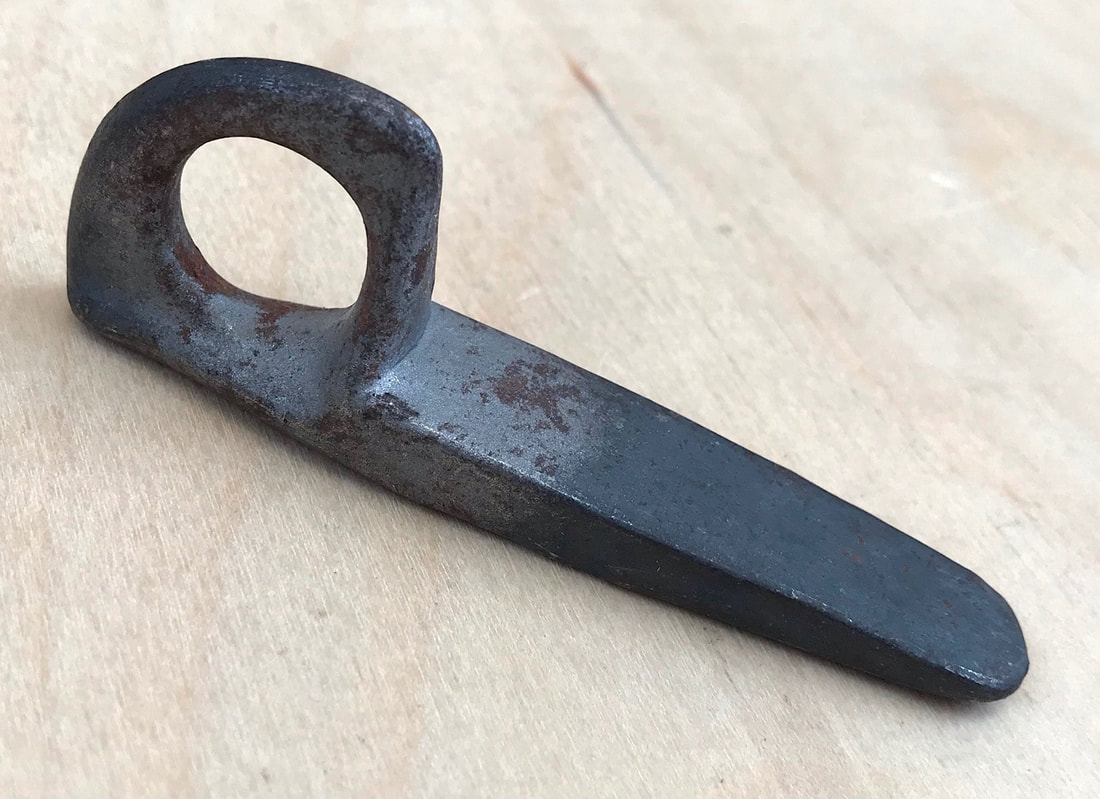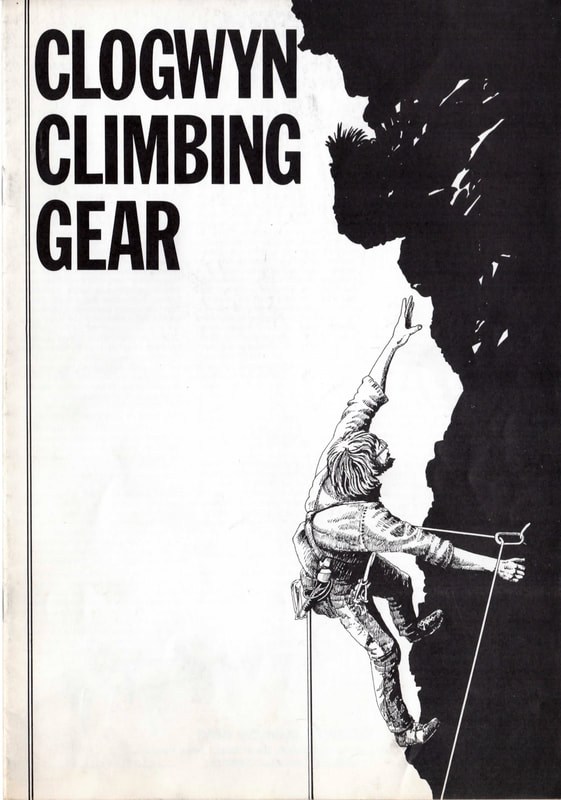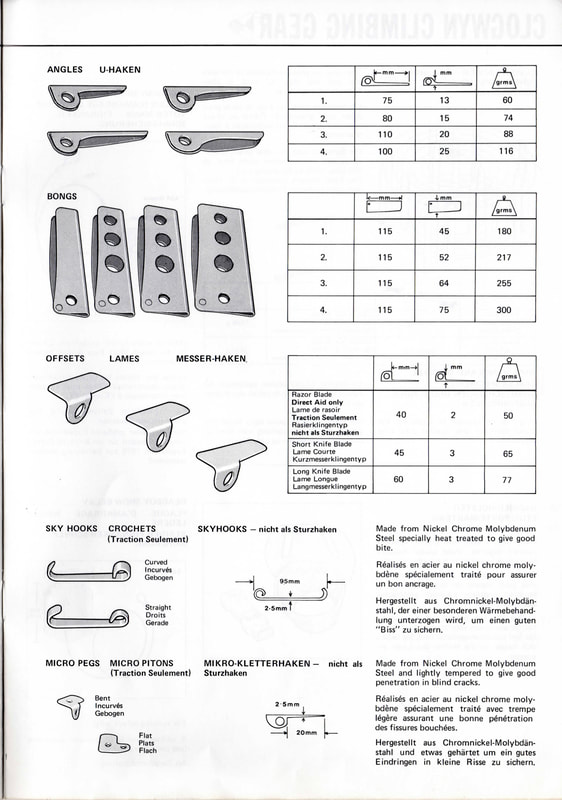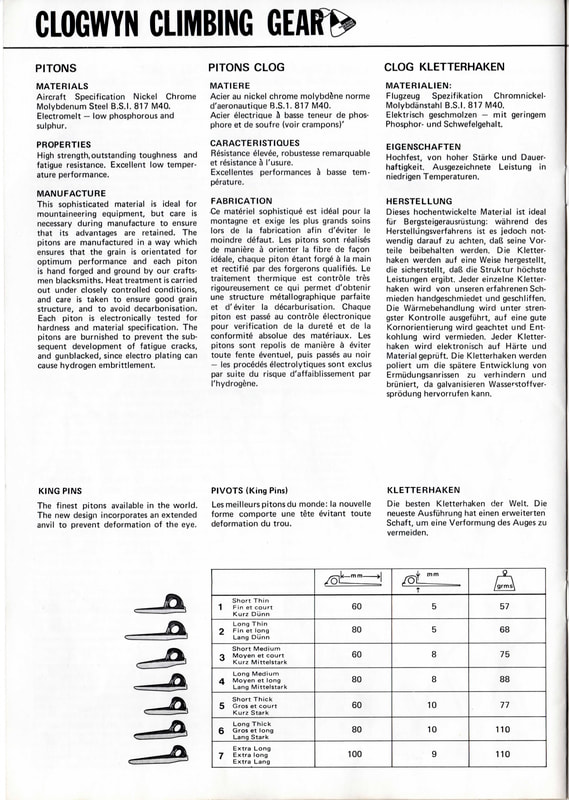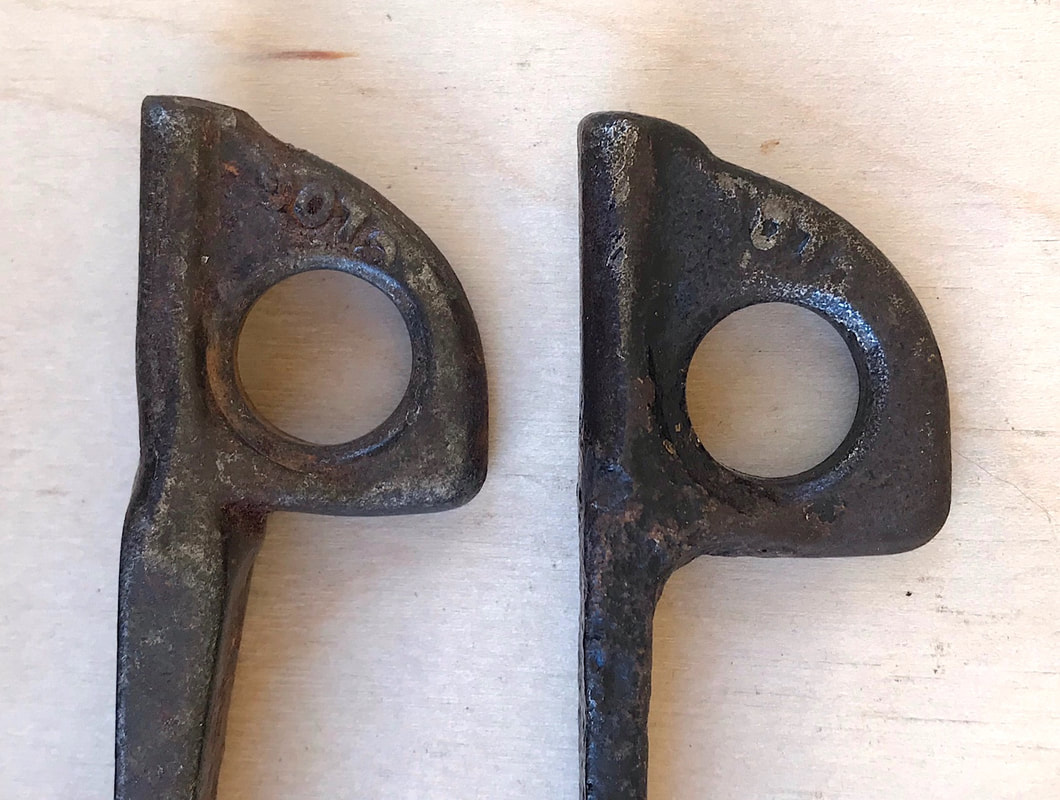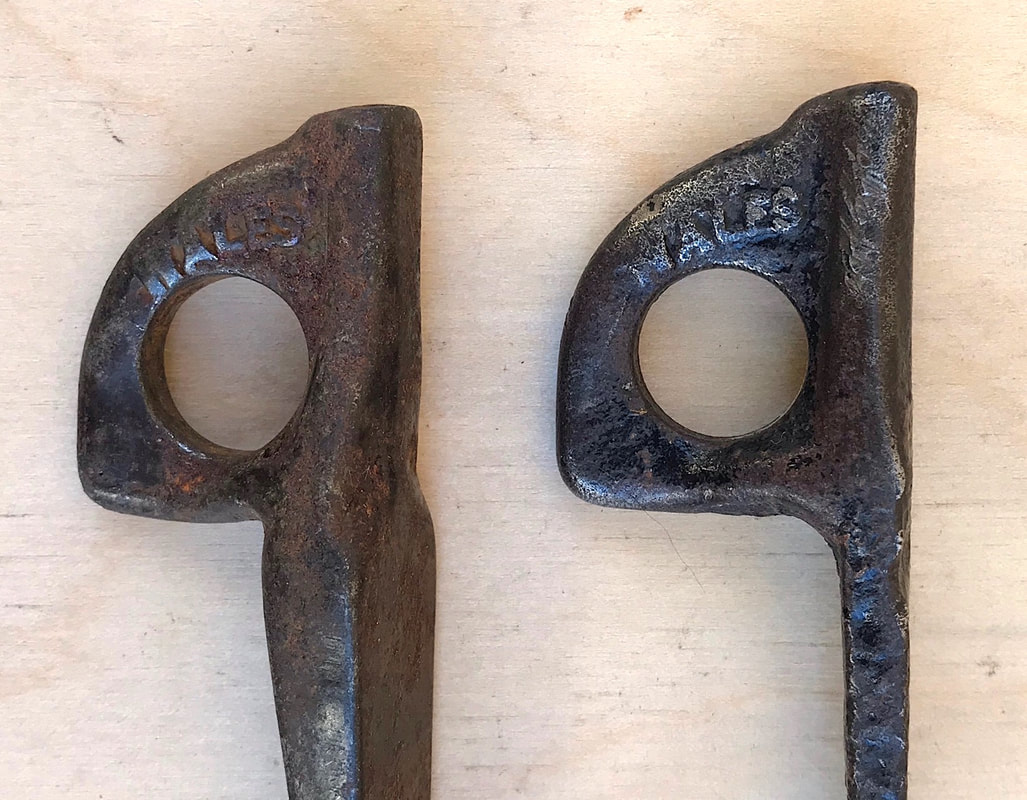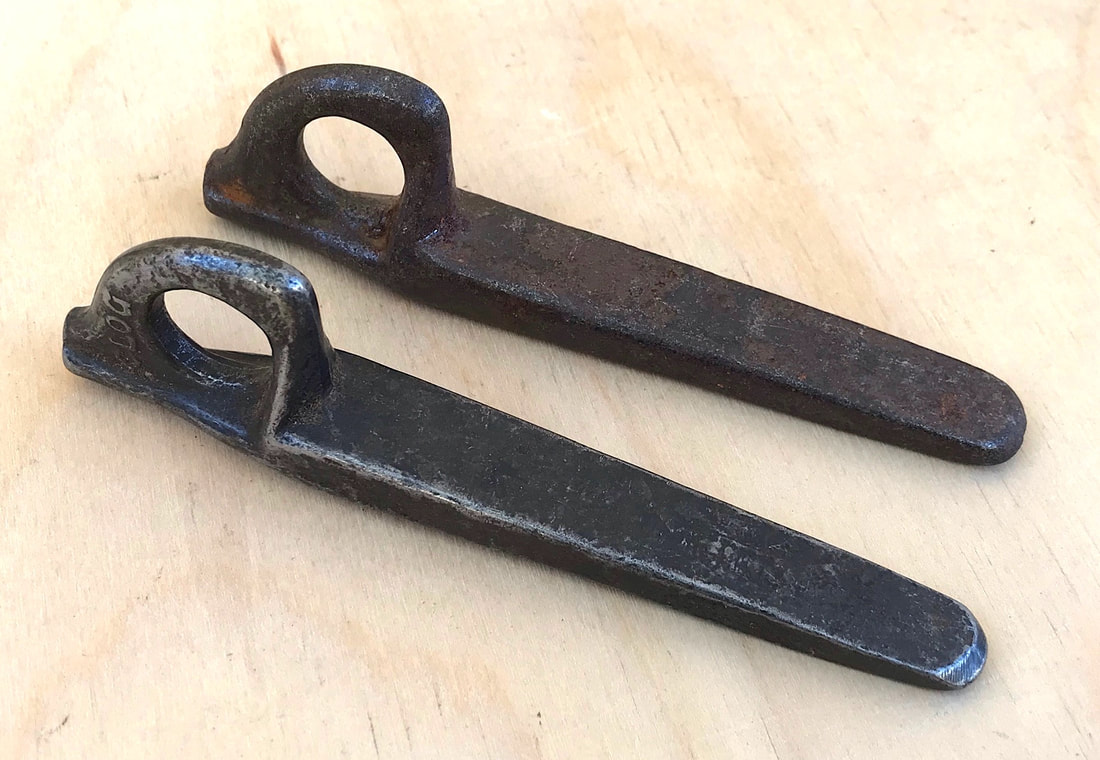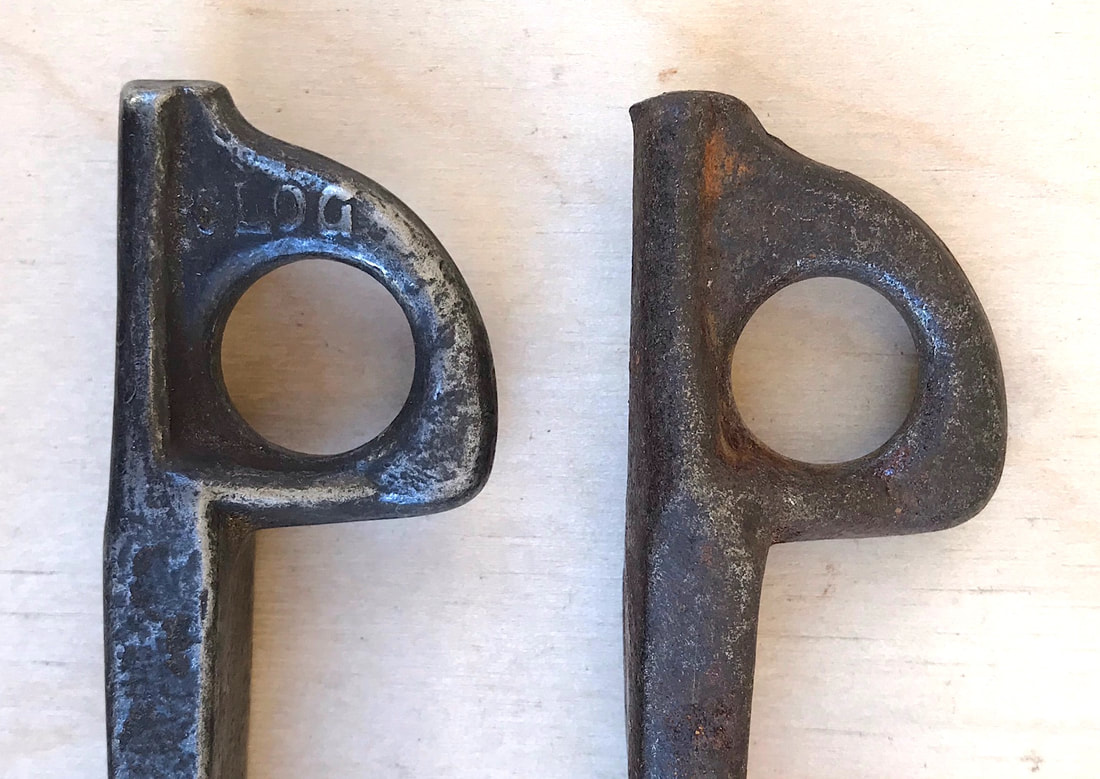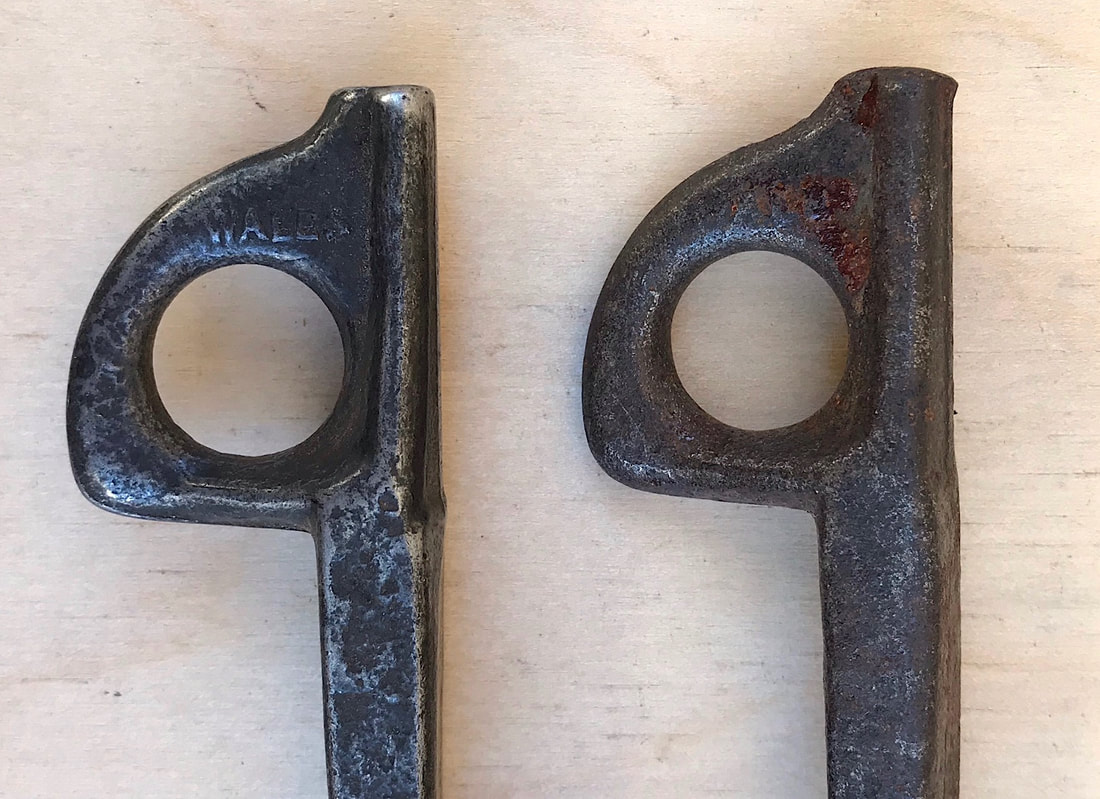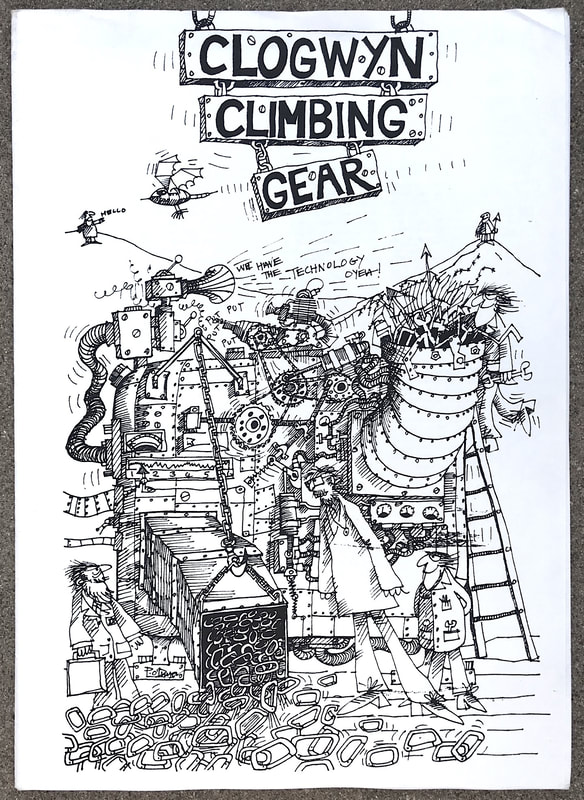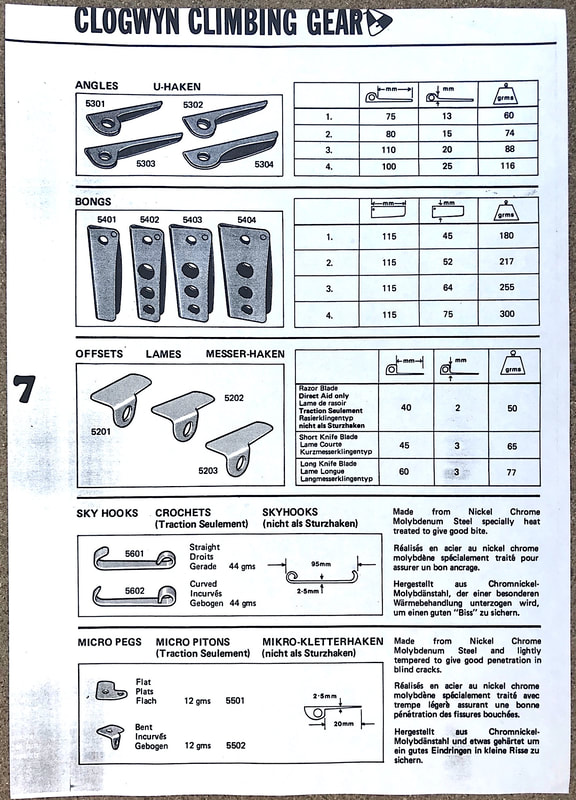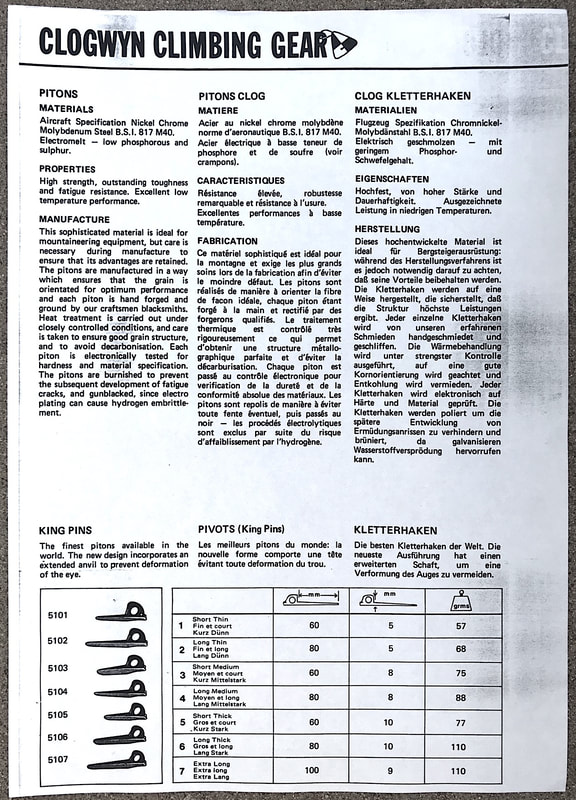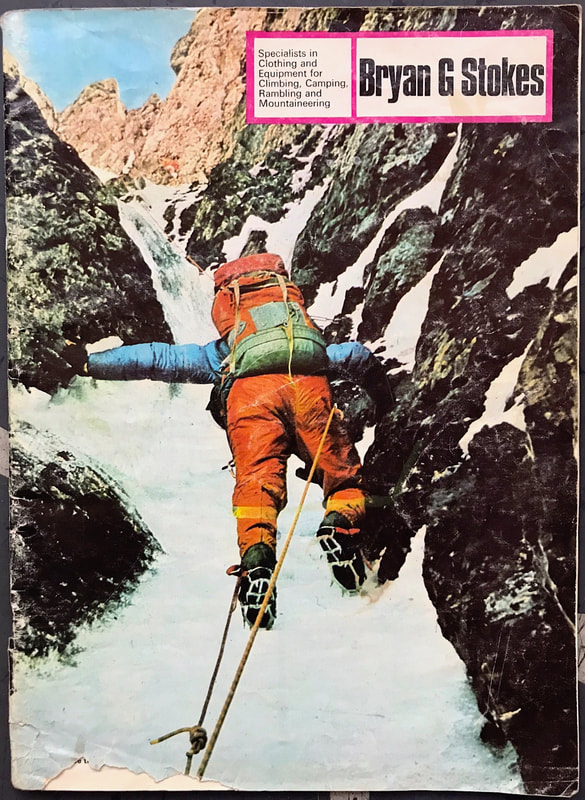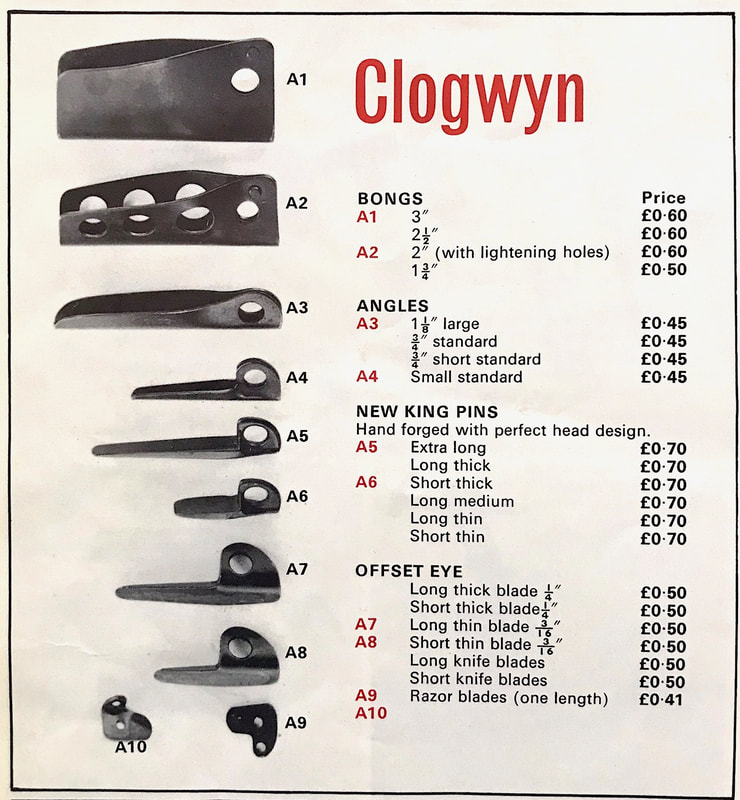Clog was created in 1966 which at that time was producing pitons and hexagon nuts. From the Clogwyn 1974 catalog: The Clog partnership was started in a derelict shed in the mountains of North Wales by two penniless climbers - Denny Moorehouse and Shirley Smith. Their aim was to make good climbing equipment which was not available in Europe at that time.
(Of course that is a bold statement): considering that many fantastic pitons were created by many manufacturers in Europe decades before 1966. Clog claims that it is the first European manufacturer of alloy steel pitons. Dolt however credits CCB European pitons as the toughest pitons available in his 1960 catalog. I credit Clogs early gear contribution to the climbing world as being their full set of Hexagon nuts which came available in 1966. Troll had a few nuts created previous to 1966, but not a full range like Clog. MoAc had a nut developed before Troll and Clog, but it was available in only one size.
From the Nuts Museum website Stephane Pennequin: Western Mail Reporter 1967 states: "The first Clogwyn production items are Pitons, and then they started to create chocks." So Clog pitons date back to 1966. The Western Mail Reporter also states that the Clogwyn workshop is in Deiniolen's Old Cenema.
My question overall is why is the company named Clogwyn, and the items created are marked Clog. Stephane answered this question: Clogwyn du’r Arddu (The Black Cliff in welsh) is the finest cliff in North Wales (Snowdonia). It is known as Cloggy for climbers. In 1966, in the long-abandoned cinema of Deiniolen (Wales), Denny Moorhouse and Shirley Smith, two original personalities, created the most mythical factory of climbing hardware, Clogwyn Climbing Gear. In few years, as Clogwyn Climbing Gear was too long to be stamped on most of the gear produced, Clog became the new logo of the factory and the generic word for nut in the language of climbers around the world.
(Of course that is a bold statement): considering that many fantastic pitons were created by many manufacturers in Europe decades before 1966. Clog claims that it is the first European manufacturer of alloy steel pitons. Dolt however credits CCB European pitons as the toughest pitons available in his 1960 catalog. I credit Clogs early gear contribution to the climbing world as being their full set of Hexagon nuts which came available in 1966. Troll had a few nuts created previous to 1966, but not a full range like Clog. MoAc had a nut developed before Troll and Clog, but it was available in only one size.
From the Nuts Museum website Stephane Pennequin: Western Mail Reporter 1967 states: "The first Clogwyn production items are Pitons, and then they started to create chocks." So Clog pitons date back to 1966. The Western Mail Reporter also states that the Clogwyn workshop is in Deiniolen's Old Cenema.
My question overall is why is the company named Clogwyn, and the items created are marked Clog. Stephane answered this question: Clogwyn du’r Arddu (The Black Cliff in welsh) is the finest cliff in North Wales (Snowdonia). It is known as Cloggy for climbers. In 1966, in the long-abandoned cinema of Deiniolen (Wales), Denny Moorhouse and Shirley Smith, two original personalities, created the most mythical factory of climbing hardware, Clogwyn Climbing Gear. In few years, as Clogwyn Climbing Gear was too long to be stamped on most of the gear produced, Clog became the new logo of the factory and the generic word for nut in the language of climbers around the world.
..............................................................................................
|
First lets look at a few differences with the Clog manufacturers marks. I am thinking that the "Clog Made In Wales" mark is the earliest. Then "Clog Wales", then the "Clog" word within a oval outline. When looking at Clog nuts there are three variations. First generation is "CLOG and number," only letters and number. Second generation is the "CLOG" word within a oval outline and the nut number outside the oval. Third generation is "CLOG" word and nut number both within oval outline.
|
Also at some time thicker Knifeblades (not sure if they are called Knifeblades) were created up to 1/4" thick. I also found a Clog piton that has a brownish color to it which is not paint, but more the metal seems to be different than the other Knifeblades.
|
Clogwyn 1974 catalog from Denis Pivot sent to Stephane Pennequin. This 1974 catalog mentions that a new King Pin design was created incorporating a extended anvil on the hammer end to prevent the deformation of the piton eye.
What is interesting with these two pitons is that the "Clog" and "Wales" words on the piton are designed for the pitons to be read diagonally.
|
I am still looking for proof of when the thicker 1/4" Clog Knifeblade pitons were offered to the public. These catalogs only show the 3/32" and 1/8" Knife Blades. Also it is interesting that none of these catalogs show the Clog pound-in ice screws which date back to the later 1960s. The search continues.......
